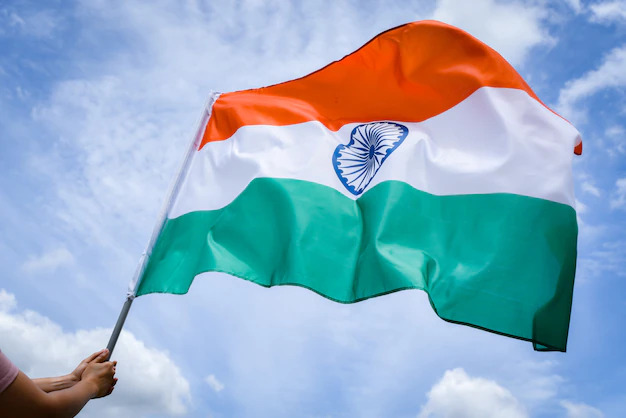As our nation gears up to celebrate 75 years of independence from the tyranny and oppression inflicted by colonial rule, it is important to recognize the role played by our national flag in the freedom struggle as a symbol of united India and the significance it holds today.
It will serve us well to delve deeper into the history of how our national flag came to be. The first national flag in India is said to have been hoisted on August 7, 1906, in the Parsee Bagan Square in Calcutta and was composed of three horizontal strips of red, yellow and green. 1931 was a landmark year in the history of the flag. A resolution, adopting a tricolour flag as our national flag was passed.
During the later years of the freedom struggle from 1940-1946, there have been several unsung flag martyrs whose contribution to protecting and proudly hoisting the tricolour remains mostly unrecognised. One such notable incident was the Dhekiajuli fire incident in Assam at the height of the Quit India Movement in 1942. Wherein, Dayal Panika, Kundu Kachari, Manbar Nath and several others took part in a procession that was proceeding towards Dhekiajuli Thana on 20 September 1942 to hoist the Tricolour flag atop it. Subsequently, the officer in charge ordered a lathi charge and firing after the discovery of the processionists’ success in hoisting the Tricolour flag. Many people died in the police firing while others succumbed to their injuries in a few days.
The National Flag of India was adopted in its present form during the meeting of the Constituent Assembly held on 22 July 1947, a few days before India’s independence from the British on 15 August 1947. Thus it is correct to assert that the evolution of the Indian National Flag sailed through several vicissitudes to arrive at what it is today.
Since the flag is an embodiment of national pride and is one of the most respected national symbols, there exist certain rules governing its display. The Prevention of Insults to National Honour Act, 1971 penalises the desecration of or any insult to the national symbols like the National Flag, National Anthem, and Indian Map as well as the contempt of the Constitution of India.
This Act must be read in tandem with the Flag Code of India. The Code, enacted in 2002, brings together all laws, conventions, practices, and instructions for the display of the National Flag. It provides that The National Flag shall be rectangular in shape. The Flag can be of any size but the ratio of the length to the height of the Flag shall be 3:2. It allows the unrestricted display of the Tricolour as long as the honour and dignity of the flag are respected. The Code explicitly states that whenever the National Flag is on display, it should occupy the position of honour and should be distinctly placed. A damaged or dishevelled National Flag should not be displayed. It is pertinent to remember that The National Flag, if made of paper, is waved by the general public, these flags should not be discarded on the ground but in private. As citizens of this nation, it is our duty to accord our National Flag, the dignity it deserves and be mindful of the same, especially on days of national significance such as 15th August.
Interestingly, The Flag Code of India, 2002 has been amended to permit the use of machine-made National Flags and those made of polyester, departing from earlier rules that restricted the materials used in its manufacture to cotton, wool, silk, and khadi and required flags to be hand-woven. Another significant change has been brought about by the amendment of 19th July 2022. Now citizens are allowed to display the national flag in open or on the house of a member of public and it can be flown day and night.
On account of the amended rules governing the display of the National Flag, and on the birth anniversary of Pingali Venkayya, the freedom fighter who designed the flag, Prime Minister Narendra Modi launched the ‘Har Ghar Tiranga’ campaign on 2nd August 2022. As part of the campaign, citizens are invited not only to unfurl the flag in their homes but also to post it on their social media handles and pin it virtually, for which we will receive a certificate. As highlighted by the Ministry of Culture, the objective of the campaign is to encourage people to bring the Tiranga home and to hoist it to mark the 75th year of India’s independence and the glorious history of its people, culture and achievements. While our relationship with the flag has always been more formal and institutional than personal, bringing the flag home collectively as a nation signifies a personal connection to the Tiranga. It is an embodiment of our commitment to nation-building.
The campaign has been extremely successful in every part of the country. Citizens, politicians and soldiers are jointly campaigning to show patriotism toward the country. In Maharashtra, the state government has issued directions to ensure every housing society hoists the flag on Independence Day. The city of Agra in Uttar Pradesh has claimed that a total of 20 crore households will be hoisting the national flag. While we partake in this well-intentioned initiative, it is important to remember that our true patriotism lies in our ability to accept diversity, and diversity of thought, be it linguistic, cultural or religious.





























